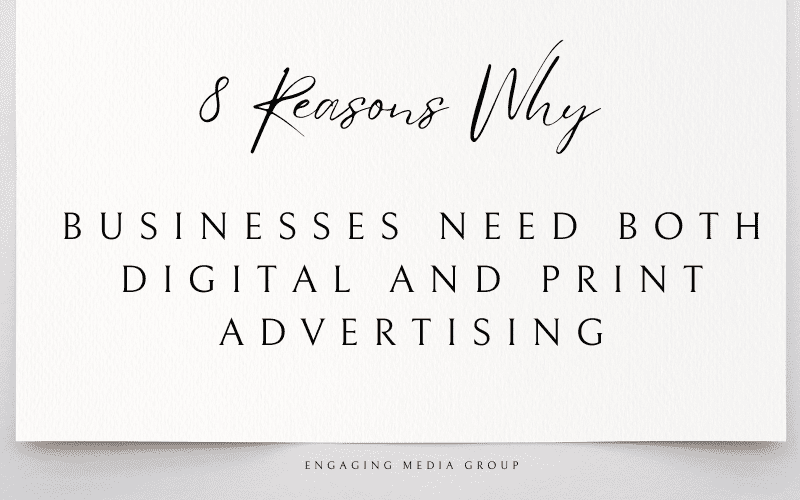As a business, incorporating both digital and print advertising strategies is essential for maximizing your reach and effectively targeting different audiences. While digital advertising has gained significant traction in recent years, print advertising still holds its value and benefits. Here’s why it is important for businesses to leverage both:
1. Reach a Diverse Audience: Combining digital and print advertising allows you to reach a wider and more diverse audience. While digital platforms offer extensive reach and targeting options, print media still has its loyal readership and can reach segments of the population who may not be as active online.
2. Targeted Approach: Digital advertising provides precise targeting capabilities, allowing businesses to reach specific demographics, interests, and behaviors. On the other hand, print media can be strategically selected based on circulation or distribution areas, reaching local communities or niche markets that align with your business offerings.
3. Enhance Brand Visibility and Recognition: Utilizing both digital and print advertising helps reinforce your brand presence. Digital campaigns can create online brand awareness and engagement, while print advertisements in magazines, newspapers, or direct mail can serve as tangible reminders of your brand, increasing brand recall.
4. Complementarity and Integration: Digital and print advertising can work together to reinforce your marketing message. For instance, using consistent branding elements, such as logos or visual aesthetics, across both platforms creates a cohesive brand identity and reinforces your marketing campaigns.
5. Tap into Different Consumer Behaviors: Consumers have different preferences and behaviors when it comes to consuming information and making purchase decisions. While some individuals prefer digital channels for convenience and immediacy, others still appreciate the tangibility and credibility of print media. By incorporating both, you can cater to various consumer preferences and increase the chances of capturing their attention.
6. Credibility and Trust: Print media, such as reputable magazines or local newspapers, often carry a sense of authority and trustworthiness. Being featured in respected print publications can enhance your business’s credibility and reputation, especially if you’re targeting specific industries or local communities.
7. Cross-Promotion Opportunities: Digital and print advertising can be integrated to create cross-promotional opportunities. For example, you can include QR codes or specific landing pages in print advertisements that drive readers to digital platforms for more information or exclusive offers, facilitating seamless customer journeys.
8. Flexibility and Adaptability: Digital advertising offers real-time tracking, immediate adjustments, and A/B testing options, allowing businesses to optimize campaigns on the go. Conversely, print advertising provides longevity and can be a more lasting form of marketing material that can be revisited and shared with others.
By combining the strengths of digital and print advertising, businesses can achieve a well-rounded marketing strategy that reaches a broad audience, maximizes brand visibility, and resonates with consumers through various touchpoints. Remember to assess your target audience, campaign goals, and available resources to determine the optimal mix of digital and print advertising for your specific business.

